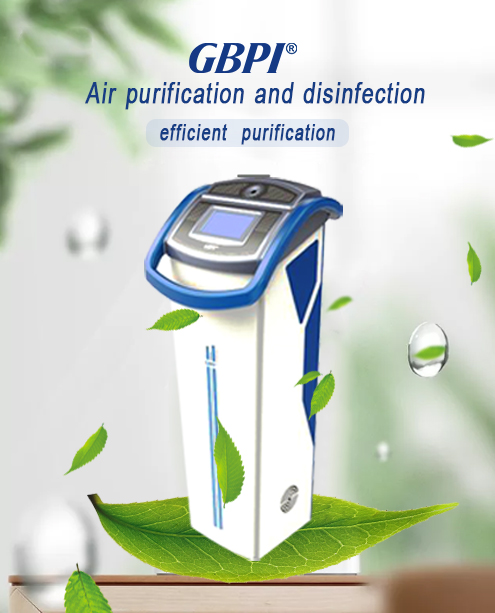At present, relevant experts have proposed that the transmission of the noval coronavirus pneumonia is mainly direct transmission, aerosol transmission and contact transmission. So what is aerosol transmission? What is the difference between aerosol transmission and air transmission? How to prevent aerosol transmission? Let's learn more about the concept and preventive measures of aerosol transmission.
Direct transmission: refers to the infection caused by the patient's sneezing, coughing, talking droplets, and direct inhalation of the exhaled gas;
Aerosol transmission: refers to droplets mixed in the air to form aerosols, causing infection after inhalation;
Contact transmission: refers to the droplets deposited on the surface of the article, after touching the contaminated hands, then touching the mucous membranes such as the mouth, nasal cavity, and eyes, causing infection.
What is aerosol?
Aerosol is a colloidal dispersion system formed by solid or liquid small particles dispersed and suspended in a gas medium, also known as a gas dispersion system. The dispersed phase is solid or liquid small particles with a size of 0.001-100μm, and the dispersion medium is gas. Liquid aerosol is usually called mist, and solid aerosol is usually called mist.
The solid or liquid particles suspended in the air are called aerosols. Clouds, fog, haze, and dust floating in the air are all aerosols. The droplets produced by sneezing and coughing can be large or small. The large ones fall to the ground quickly, and the small ones can be suspended in the air for a period of time. When they are suspended in the air, they belong to aerosols. Aerosols are also generated during some medical operations, such as tracheal intubation, bronchoscopy, and dental operations.
Clouds, fog, and dust in the sky, smoke from unburned fuel in boilers and various engines used in industry and transportation, and solid dust from mining, quarry grinding and grain processing, Man-made masking smoke and poisonous smoke are specific examples of aerosols.
What is the difference between aerosol transmission and air transmission?
Although droplet transmission and air transmission are essentially aerosol transmission, aerosol transmission is not equal to air transmission.
Droplets are saliva droplets discharged from activities such as sneezing or coughing. Their diameter is generally 1 to 5 millimeters. They spread within a space of about 1 to 2 meters from the source of infection.
Aerosols are liquid droplets discharged in the process of talking, laughing, singing, etc., and their particle size is generally 0.1 mm or less. After exhaling the human body, they evaporate quickly (within 1 second or even tens of milliseconds) to form droplet nuclei ( The particle size is a few microns), and the droplet nucleus is suspended in the air for a long time and migrates with the air. Its transmission distance can reach hundreds of meters or even more, which increases the risk of contactless transmission.
Does aerosol spread fast? How to prevent aerosol transmission?
In real life, most of the viruses exposed to the outside die very quickly. Only when they reach an extremely high threshold, can some viruses have a chance to enter the human body from the mucous membrane by chance; similarly, hovering on clothes and clothing through aerosols. Only a very small proportion of the skin virus can enter the eyes, mouth and nose through the touch of the hand.
There are many preventive measures for the transmission of these bacteria:
1. Daily disinfection must be done. For disinfection areas with large spaces, professional aerosol disinfection equipment is required. The GBPI R&D team professionally recommends Atomizing Humidification And Disinfection Equipment , which is specifically for hospitals, campuses, and stations. Airports and other large public places can disinfect the wide environmental space in all directions through manual and automatic methods. And it will not form condensation and droplets after disinfection. Close doors and windows before indoor disinfection. When spraying, spray from top to bottom and from left to right. The spray amount is based on the disinfectant solution that can evenly cover the surface of the article or the mist of the disinfectant fills the space. After acting for 30 to 60 minutes, open the doors and windows to ventilate to remove the mist and odor of the disinfectant remaining in the air;
2. In the home, open windows frequently, ventilate more, and keep the indoor air circulating;
3. Outdoor activities and unventilated environments need to wear masks: The GBPI mask consultant strongly recommends that you must wear masks that meet the mask testing requirements during outdoor activities and in unventilated rooms to reduce the risk of bacterial infection. The relevant indicators of mask testing include: bacterial filtration testing of masks , mask particulate filtering testing, etc. For more inquiries, you can directly contact GBPI mask consultants below, and provide you with relevant standards and materials for mask testing 24 hours a day.

 info@gbtest.cn
info@gbtest.cn



 en
en ru
ru es
es ar
ar

